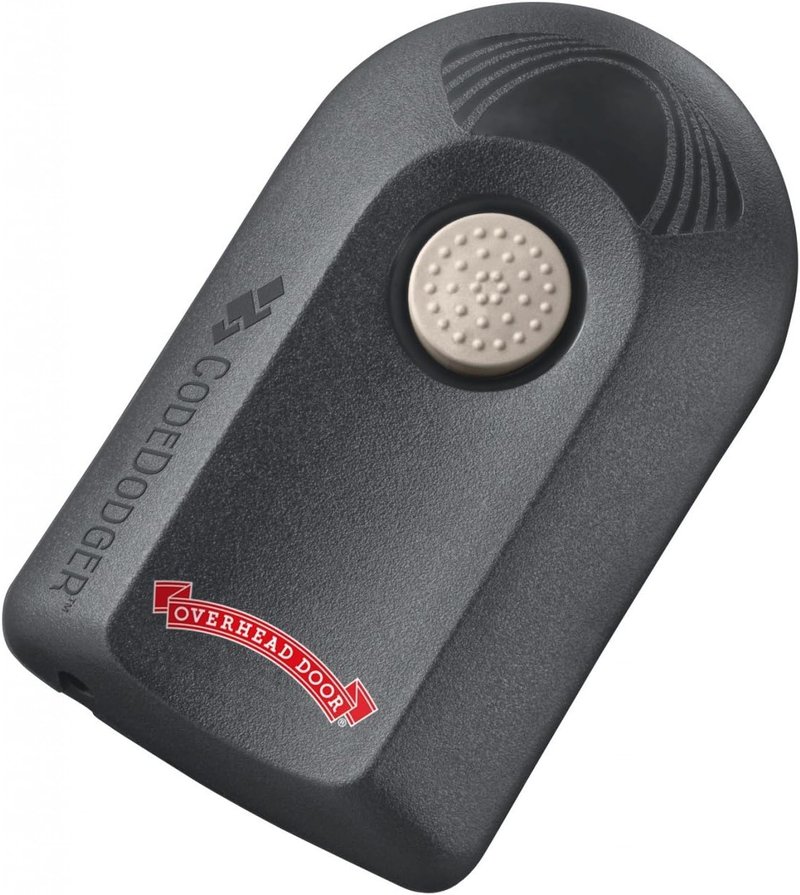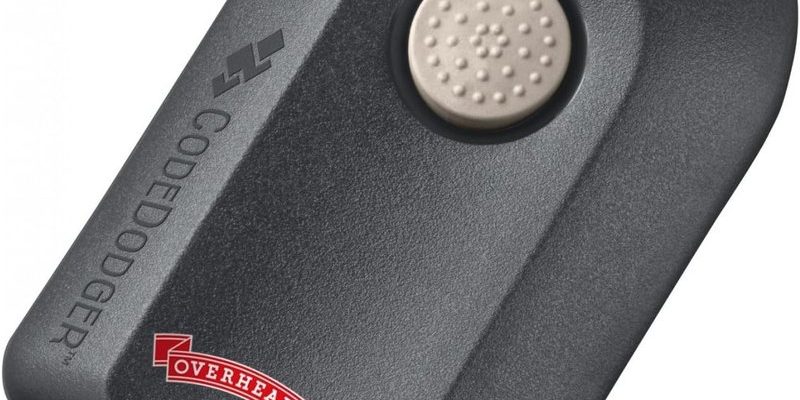
Overhead Door is a classic name in the garage world. Their remotes are everywhere—on keychains, clipped to sun visors, or hiding in kitchen junk drawers. The big question is whether these Overhead Door remotes “speak the same language” as your car’s HomeLink or Car2U system. If you’ve ever sat in your driveway, holding down buttons and hoping for magic, you know what I mean.
Understanding Overhead Door Garage Remotes
These remotes—let’s be honest—seem simple. Press a button, and your garage door opens. But under the hood, Overhead Door garage remotes use specific radio frequencies, rolling codes, and security protocols to keep things safe.
A standard Overhead Door remote works by sending a coded signal to a receiver in your garage opener. Most remotes today use something called “rolling code” technology. This means that every time you press the button, the code changes—making it much harder for someone to copy your signal. It’s like having a secret handshake that’s different every time you meet.
If your garage system is older, you might still find “fixed code” remotes floating around. These don’t change the code, so they’re less secure (kind of like using “password123” everywhere). For newer Overhead Door openers, you’ll almost always find the rolling code system in place.
How Car Remote Systems Work With Garage Doors
Most modern cars come with built-in garage door controls, usually called HomeLink or, less commonly, Car2U. These let you program your car to operate your garage door directly—no more fumbling for a separate remote.
Here’s the thing: your car’s system isn’t automatically compatible with every opener. It needs to “learn” the right code from your Overhead Door remote. Imagine your car is learning a new language; sometimes it gets the accent right, and sometimes things get lost in translation.
The process usually involves holding the car’s built-in button while simultaneously pressing your Overhead Door remote, so the car’s unit can “copy” the signal. But if the codes aren’t compatible—especially if your car or opener is much older or newer than the other—it can lead to frustration. Some cars made before 2012, for example, might have trouble pairing with newer rolling code remotes, unless you use a special “bridge” device.
Step-By-Step: Syncing an Overhead Door Remote With Your Car
You might be wondering exactly how to pair your Overhead Door remote with your car. Here’s a straightforward step-by-step process that works for most setups:
- Find the “Learn” Button: Go to your garage opener motor (usually on the ceiling) and look for a button labeled “Learn,” “Smart,” or “Program.” This is your starting point for sync and code transfer.
- Prepare the Car: Sit in your car and turn the ignition to “on” (not start, just power). Hold your car’s garage button for a few seconds until the indicator light flashes slowly.
- Pair the Remote: Hold your Overhead Door remote close to the car’s control panel. Press both the remote button and the car’s garage button at the same time. Wait for the car indicator to flash rapidly—this means the sync worked.
- Complete With Garage Opener: Quickly (you usually have 30 seconds), press and release the “Learn” button on the garage opener. Run back to your car and press the built-in garage button. If the door moves, you’re done!
If that didn’t work, don’t panic—sometimes you need to try a few times or check your car and garage opener manuals for any specific troubleshooting steps. If your system just won’t sync, you might need a bridge module, especially if you’re working with rolling code security.
Common Compatibility Issues With Overhead Door Remotes
Let me explain what often trips people up. Even when you follow every instruction, you might still hit a brick wall. The most common issues usually involve code formats, outdated remotes, or low battery problems.
- Rolling Code Mismatch: If your Overhead Door remote uses Security+ 2.0 or a unique rolling code format, some car systems (particularly older ones) can’t recognize the code—no matter how long you press those buttons.
- Dead or Weak Batteries: It sounds obvious, but if your remote’s battery is running low, the signal might not be strong enough for your car’s receiver to copy, or for the garage opener to pick up. Always swap in a new battery before troubleshooting.
- Unusual Frequency: Most systems use the 315 or 390 MHz frequency, but if your opener or remote is on something stranger (like 433 MHz), your car’s system may not recognize it at all.
Compatibility isn’t guaranteed, even when both devices are from “major brands.” Always check your car and opener model for any known limitations before buying or replacing equipment.
Types of Overhead Door Remotes & Universal Alternatives
Not all Overhead Door remotes are the same. Some are brand-specific and only work with Overhead Door openers. Others are considered “universal remotes”—they can be programmed for several different brands and models. So, which one do you have?
- Standard Remotes: These usually come with your Overhead Door opener, coded specifically for your unit. They’re reliable but may struggle to sync directly with cars, especially if your car uses newer code technology or vice versa.
- Universal Remotes: These remotes are designed to work with a variety of garage door openers—including Overhead Door, LiftMaster, Genie, and others. If you’re having trouble pairing your car with an original Overhead Door remote, a universal option is often easier to sync.
Universal remotes typically have clear programming instructions and wider compatibility, but they might lack some unique features (like advanced encryption or specific button layouts) found on brand-specific remotes. Honestly, if you’re hitting a wall with pairing, it’s worth trying a universal remote before calling for help.
Troubleshooting Overhead Door Remote Pairing With Cars
Sometimes, no matter what you try, things just won’t sync. Here are some troubleshooting tips if your Overhead Door garage remote refuses to pair with your car:
- Reset the Car’s Garage System: You may need to clear out old codes from your car’s memory. Usually, this involves holding down the two outer HomeLink buttons until the light blinks rapidly (about 10 seconds). This “factory reset” clears past pairings.
- Check the Remote Battery: If your remote feels sluggish or doesn’t work from as far away as it used to, a new battery might solve the problem.
- Move Closer: During pairing, make sure your car is parked inside the garage—ideally, right under the opener. Signals can get lost if you’re too far away.
- Update or Upgrade: If your car is older, or if the pairing process just never works, you might need a bridge “repeater” device. Overhead Door and HomeLink both sell these—they act as a translator so your car and opener can finally agree on a code.
Tech, especially wireless stuff, sometimes just gets weird. So, don’t stress if it takes a few tries or if you need an adapter.
Why Garage Remote Compatibility Matters For Security
It’s tempting to find a shortcut, but syncing your car with your garage door remote isn’t just about convenience—it’s a matter of security, too. Old-school fixed code systems are easier for thieves to “crack.” That’s why Overhead Door, and most car manufacturers, moved to rolling code technology.
Pairing a remote properly means you’re less likely to have accidental openings or security loopholes. If your car’s system can’t handle rolling code remotes, your best bet is to use a bridge module. It costs a little extra, but honestly, peace of mind is worth it.
If you’re using a universal remote, make sure it supports rolling codes if your Overhead Door opener uses them. Check all manuals before buying anything new. Safety first—even with something as boring as a garage remote.
When to Call an Expert About Garage Remote Compatibility
Let’s be real—there’s only so much button-pushing and code-resetting one person can handle. If you’ve tried every pairing step, swapped batteries, checked manuals, and maybe even yelled at your devices, it might be time to talk to a pro.
Professional garage door technicians see these problems every day. They can quickly pinpoint whether your Overhead Door remote and your car are a match, or if you’ll need extra hardware. Plus, they’ll spot issues like worn-out receivers or interference from nearby electronics—stuff most of us wouldn’t notice.
Before you call, jot down your garage opener model, your car’s make and year, and what you’ve already tried. That way, you won’t waste time (or money) on a house call for something you could fix yourself.
The Bottom Line: Can Overhead Door Garage Remotes Sync With Cars?
Pairing your car with an Overhead Door garage remote isn’t always as plug-and-play as we’d like, but it’s often doable. The key is matching code types and making sure your car and opener are speaking the same “language.” Sometimes you’ll need a bridge device; sometimes a universal remote is the easier fix.
If you run into trouble, start simple: fresh batteries, clear old codes, and follow pairing instructions to the letter. If all else fails, don’t hesitate to bring in an expert.
Having a compatible garage remote system makes life smoother, and, more importantly, keeps your home secure. So whether you’re just getting started or you’ve tried syncing your remote for the tenth time, remember: you’re not alone—nearly everyone struggles with these little gadgets at some point.
